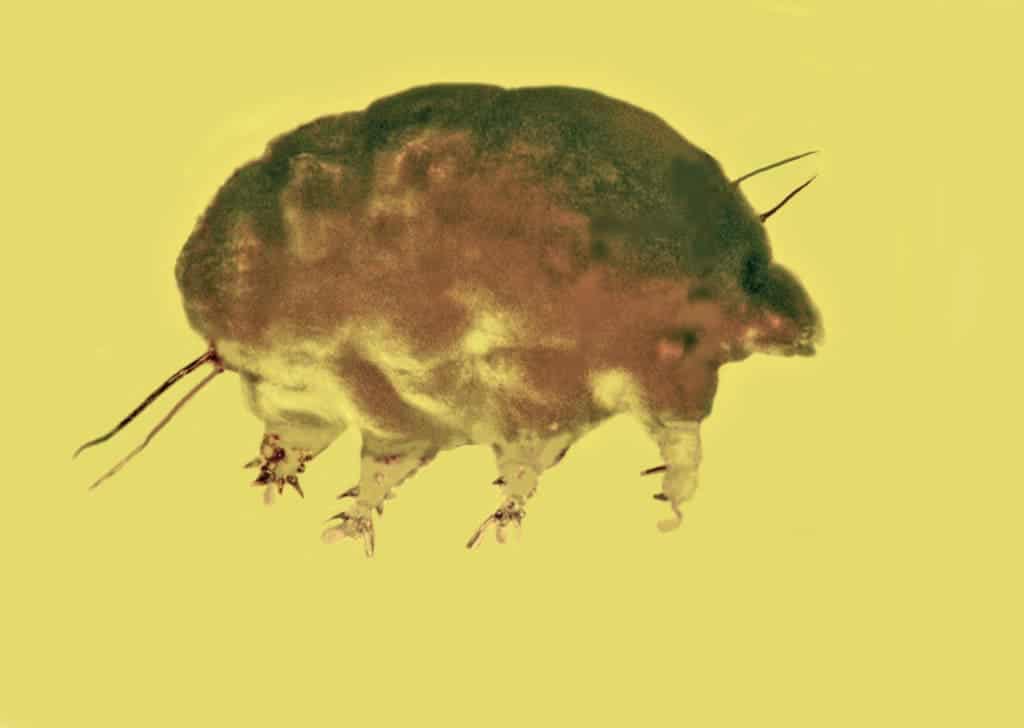Amber is nature’s time capsule. Sometimes, tiny creatures and plants get trapped in a tree’s resin and, under the right condition, become preserved in minute details for millions of years. The picture below, for instance, shows a 30-million-year-old piece of amber containing microinvertebrates known as “mold pigs.”

You’ve likely heard about water bears, or tardigrades, before. These adorable-looking microscopic creatures are extremophiles that are able to withstand intense heat, cold, pressure, radiation, even the vacuum of space.
We don’t know if mold pigs were as resilient as water bears, but they sure look very similar. Technically, the species is called “Sialomorpha dominicana,” where “sialomorpha” is derived from the Greek words for “fat hog” and “shape.” Dominicana comes the Dominican Republic, where the amber was discovered not too long ago.
When a tree suffers a wound (like a broken branch) or if it is attacked by insects or fungi, it exudes thick resin that plugs up the injury and prevents further damage. It seals and sterilizes the injury.
When resin is secreted, it’s not certain that it will turn into amber. More often than not, it gets weathered away. First of all, the resin needs to be chemically stable and not degrade over time. It has to be resistant to sun, rain, extreme temperatures, and microorganisms like bacteria and fungi. There are two types of resin produced by plants that can fossilize. Terpenoids are produced by gymnosperms (conifers) and angiosperms (flowering plants). They are composed of ring structures made from isoprene (C5H8) units. Phenolic resins are only produced by angiosperms. An extinct type of tree called medullosans produced another unique type of resin.
The mold pig
George Poinar Jr. from Oregon State University recently published a paper in which he and colleagues closely examined the amber and the microscopic hogs trapped inside it, along with their fungal food source and other animals that lived in their habitat.
“Every now and then we’ll find small, fragile, previously unknown fossil invertebrates in specialized habitats,” Poinar said. “And occasionally, as in the present case, a fragment of the original habitat from millions of years ago is preserved too. The mold pigs can’t be placed in any group of currently existing invertebrates – they share characteristics with both tardigrades, sometimes referred to as water bears or moss pigs, and mites but clearly belong to neither group.”
In total, the researchers have numbered several hundred individual fossils in the small piece of amber. Apart from mold pigs, the amber contains pseudoscorpions, nematodes, fungi, and protozoa.
Each mold pig is no longer than 100 micrometers and had flexible heads and four pairs of legs. The researchers assert that they must have grown by molting their exoskeleton and likely subsided on a diet of fungi and small invertebrates. Whereas mites and water bears have claws present at the end of their legs, mold pigs have none.
“The large number of fossils provided additional evidence of their biology, including reproductive behavior, developmental stages and food,” he said. “There is no extant group that these fossils fit into, and we have no knowledge of any of their descendants living today. This discovery shows that unique lineages were surviving in the mid-Tertiary.”
The researchers’ classification suggests that mold pigs represent a new phylum — a level of classification or taxonomic rank below kingdom and above class.
What researchers hope to answer in the future is when did this lineage originate and how long it lasted. Whether there are any living descendants to mold pigs is anyone’s guess at this moment.
Findings were published in the journal Invertebrate Biology.



